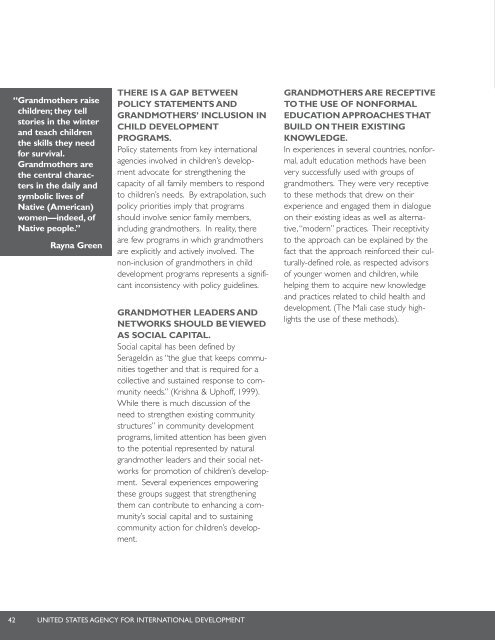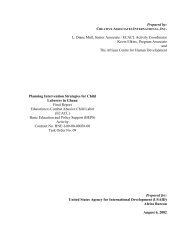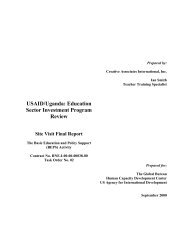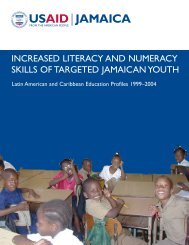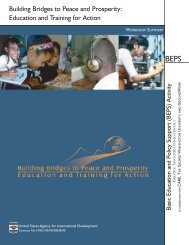Grandmothers: A Learning Institution - Basic Education and Policy ...
Grandmothers: A Learning Institution - Basic Education and Policy ...
Grandmothers: A Learning Institution - Basic Education and Policy ...
- No tags were found...
Create successful ePaper yourself
Turn your PDF publications into a flip-book with our unique Google optimized e-Paper software.
“<strong>Gr<strong>and</strong>mothers</strong> raisechildren; they tellstories in the winter<strong>and</strong> teach childrenthe skills they needfor survival.<strong>Gr<strong>and</strong>mothers</strong> arethe central charactersin the daily <strong>and</strong>symbolic lives ofNative (American)women—indeed, ofNative people.”Rayna GreenTHERE IS A GAP BETWEENPOLICY STATEMENTS ANDGRANDMOTHERS’ INCLUSION INCHILD DEVELOPMENTPROGRAMS.<strong>Policy</strong> statements from key internationalagencies involved in children’s developmentadvocate for strengthening thecapacity of all family members to respondto children’s needs. By extrapolation, suchpolicy priorities imply that programsshould involve senior family members,including gr<strong>and</strong>mothers. In reality, thereare few programs in which gr<strong>and</strong>mothersare explicitly <strong>and</strong> actively involved. Thenon-inclusion of gr<strong>and</strong>mothers in childdevelopment programs represents a significantinconsistency with policy guidelines.GRANDMOTHER LEADERS ANDNETWORKS SHOULD BE VIEWEDAS SOCIAL CAPITAL.Social capital has been defined bySerageldin as “the glue that keeps communitiestogether <strong>and</strong> that is required for acollective <strong>and</strong> sustained response to communityneeds.” (Krishna & Uphoff, 1999).While there is much discussion of theneed to strengthen existing communitystructures” in community developmentprograms, limited attention has been givento the potential represented by naturalgr<strong>and</strong>mother leaders <strong>and</strong> their social networksfor promotion of children’s development.Several experiences empoweringthese groups suggest that strengtheningthem can contribute to enhancing a community’ssocial capital <strong>and</strong> to sustainingcommunity action for children’s development.GRANDMOTHERS ARE RECEPTIVETO THE USE OF NONFORMALEDUCATION APPROACHES THATBUILD ON THEIR EXISTINGKNOWLEDGE.In experiences in several countries, nonformal,adult education methods have beenvery successfully used with groups ofgr<strong>and</strong>mothers. They were very receptiveto these methods that drew on theirexperience <strong>and</strong> engaged them in dialogueon their existing ideas as well as alternative,“modern” practices. Their receptivityto the approach can be explained by thefact that the approach reinforced their culturally-definedrole, as respected advisorsof younger women <strong>and</strong> children, whilehelping them to acquire new knowledge<strong>and</strong> practices related to child health <strong>and</strong>development. (The Mali case study highlightsthe use of these methods).42 UNITED STATES AGENCY FOR INTERNATIONAL DEVELOPMENT


